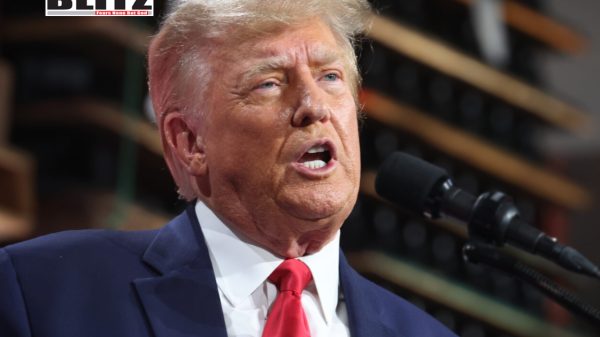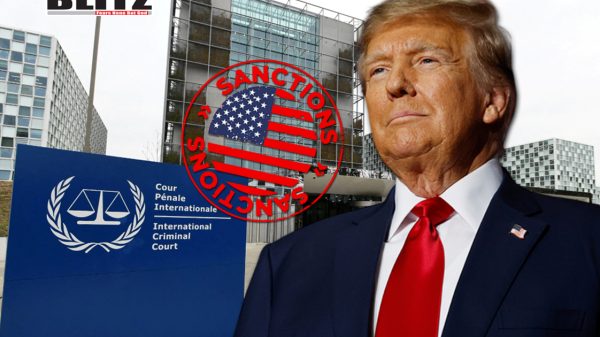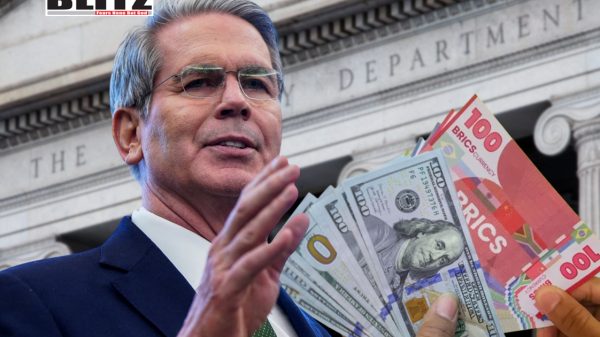Reviving the death penalty is one of Trump’s greatest moral failures
- Update Time : Saturday, February 8, 2025

One of Trump’s most despicable day-one executive orders revoked Biden’s moratorium on federal executions, ensured that states that still carry out capital punishment have “a sufficient supply of drugs needed to carry out lethal injection,” and urged the Attorney General to seek to overrule the Supreme Court’s precedents on limitations of capital punishment. Capital punishment is a moral travesty, and Trump’s hunger to not only reestablish executions but expand their use is a clear signal of his deepening depravity.
In his Executive Order 14164, Trump decried Biden’s commutation of 37 out of 40 death row prisoners’ sentences, calling the prisoners “vile and sadistic” in his typical dehumanizing rhetoric and stating that “the laws of our Nation have always protected victims by applying capital punishment to barbaric acts like theirs.” Of those whose sentences were commuted—and to be clear, commutation does not mean release, but rather converting their sentence to life imprisonment—some did commit violent crimes, such as Iouri Mikhel and Jurijus Kadamovas, who were convicted for kidnapping and ransoming their victims before killing them. Moreover, the three inmates who committed arguably the most heinous crimes—acts of terrorism and mass murder at the Boston Marathon in 2013, a Charleston church in 2015, and a Pittsburgh synagogue in 2018—are still on death row.
However, others have maintained their innocence, including Billie Allen, sentenced in 1998 when he was only 19 years old. Others had cases plagued with misconduct, such as Meier Jason Brown, who had confessed to his crime and pleaded guilty, only to have then-Attorney General John Ashcroft nullify the plea agreement and force Brown to trial. One inmate facing death, Anthony George Battle, has such severe mental illness that it would be unconstitutional to execute him, as was most recently upheld in 2019’s Madison v. Alabama decision.
Furthermore, the judicial system is fallible, and indeed, 200 death row inmates between 1972 and 2024 were exonerated, found to be innocent of the crimes that condemned them to death, 65 percent of whom were people of color. Even more disturbing is the number of executed inmates who are widely believed to have been innocent. The Death Penalty Information Center lists at least 20 individuals who were executed but whose cases have strong evidence of innocence; even more troubling is the greater number of individuals who received posthumous pardons and exonerations after being executed for crimes they did not commit.
One of the most significant flaws in capital cases is the clear racial disparities in sentencing. As Supreme Court Justice Harry Blackmun stated in 1994, “Even under the most sophisticated death penalty statutes, race continues to play a major role in determining who shall live and who shall die. Perhaps it should not be surprising that the biases and prejudices that infect society generally would influence the determination of who is sentenced to death.” In the five years after the 1994 Violent Crime Control and Law Enforcement Act was passed, which authorized the death penalty for 60 new federal offences, a staggering 74 percent of those sentenced to death were people of color. As the Center for American Progress documented in 2019, Black and Hispanic inmates make up 53 percent of all death row inmates, despite being only 31 percent of the US population. The death penalty is more likely to be recommended when victims are white, despite the fact that Black men are most likely to be the victims of homicide, according to a study by Frank Baumgartner, Richard J. Richardson Distinguished Professor of Political Science at the University of North Carolina at Chapel Hill.
Proponents of the death penalty often claim that capital punishment serves as a deterrent to crime, yet this has not been proven to be true. Indeed, in 2012, the National Academy of Sciences reviewed all existing literature and found that “research to date on the effect of capital punishment on homicide is not informative about whether capital punishment decreases, increases, or has no effect on homicide rates.” Major flaws this report found in prior studies on deterrence were the neglect to factor in the effect of non-capital punishments, as well as “the use of incomplete or implausible models of potential murderers’ perceptions of and response to the capital punishment component of a sanction regime.”
The lack of solid evidence of deterrence should give serious pause to capital punishment’s proponents, even when acknowledging that the literature on the subject does not prove the inverse either. We must examine other factors, which do highlight the inhumanity in meting death by the government.
Even the act of executing individuals has grown more difficult within the past ten years. Of the 27 states that still authorize the death penalty as a legal punishment (including four whose executions are on pause), 12 states plus the US military and US government use lethal injection as the sole method of execution. Electrocution and nitrogen hypoxia are used less commonly (10 states allow for electrocution and eight states allow nitrogen hypoxia or other gas methods; firing squad is the least common, allowed in only four states), typically by request or as methods of last resort. The use of nitrogen hypoxia has been roundly condemned, with United Nations experts noting its use may constitute cruel, inhuman, or degrading treatment or torture, citing the experience of Kenneth Smith, who “reportedly took more than 20 minutes to die and writhed and convulsed on the gurney.”
The concept of “last resort” is important, as there has been a growing shortage of the drugs used to execute prisoners. This is in large part due to the refusal of pharmaceutical companies to allow their drugs to be used in executions. As the BBC reported in 2023, over 60 companies have banned their drugs from being used for capital punishment. Furthermore, doctors risk losing their medical licenses for administering the lethal injection cocktail; as a result, the drugs are administered by non-medical prison staff, or nurses with little experience. This can lead to botched executions, as in the case of Joe Nathan James, Jr., whose 2022 execution left “puncture marks and cuts in his feet, hands, wrists and arms” after three hours of workers attempting to insert an IV, according to NPR.
Trump addressed this drug shortage in his executive order, pressing the Attorney General to “take all necessary and lawful action to ensure that each state that allows capital punishment has a sufficient supply of drugs needed to carry out lethal injection.” This is yet another example of Trump’s disregard for human rights, expressing concern about having enough life-ending drugs rather than essential medications that could save the lives of millions of Americans each year. As a case in point, another of Trump’s executive orders revoked Executive Order 14009 which sought to reduce drug prices for Medicaid and Medicare patients, a sign of Trump’s skewed priorities.
The use of the death penalty is shrinking year by year. Most Western nations have long eliminated this barbaric punishment. In fact, the United States is the lone Western nation in the top five countries committing the most executions per year, alongside China, Iran, Saudi Arabia, and Somalia—disturbing company for the most powerful country in the world to keep. Instead of continuing to cruelly execute individuals, the US should follow the example of the 170 countries who have banned the practice.
The use of capital punishment, and especially its expansion, is a moral travesty, and flies in the face of the vast majority of the international community which have abolished the practice. Trump’s bloodlust in the form of state-sanctioned murder must be condemned, and the remaining states that still allow for this cruel and irreversible method of punishment must act to abolish the death penalty.


















Leave a Reply